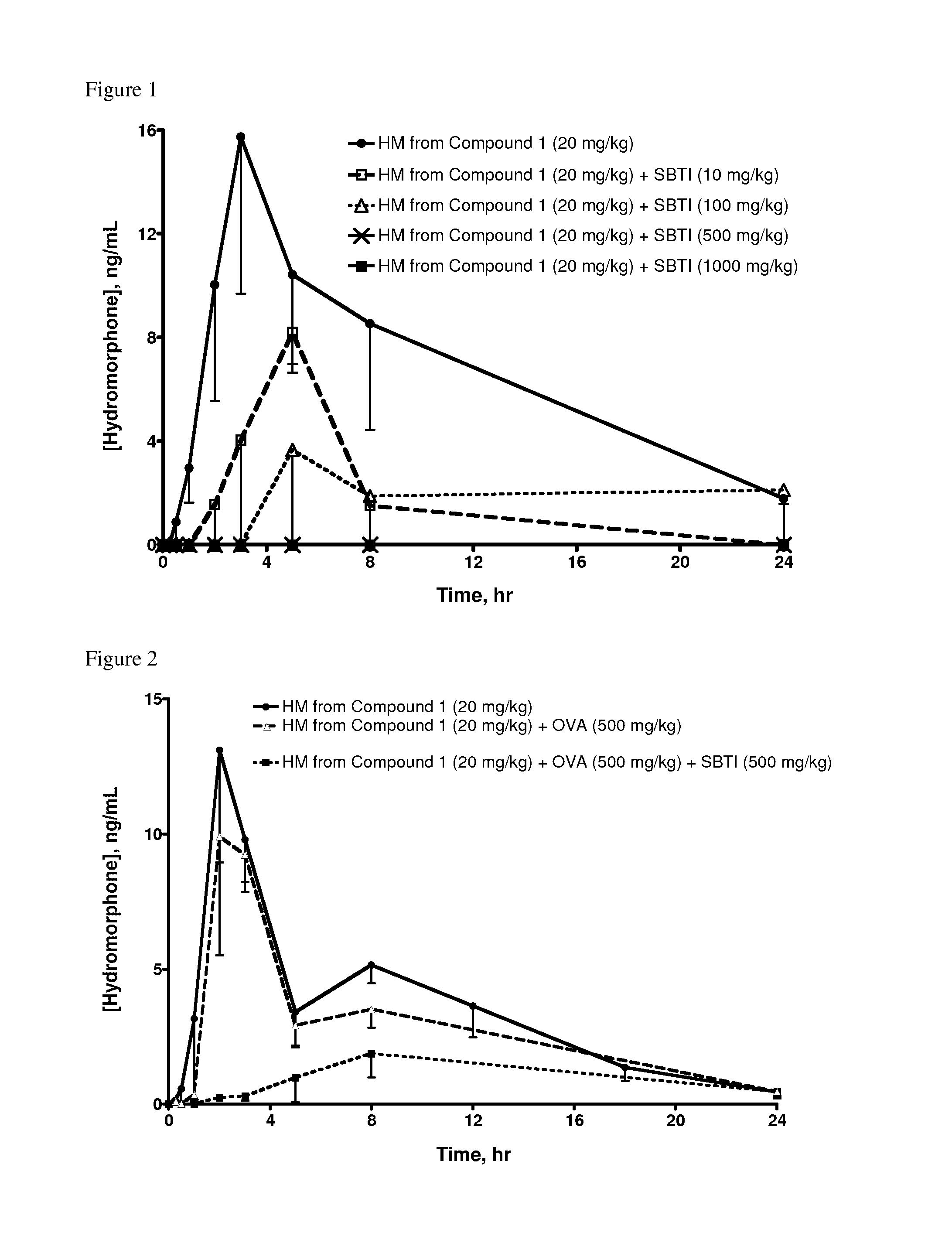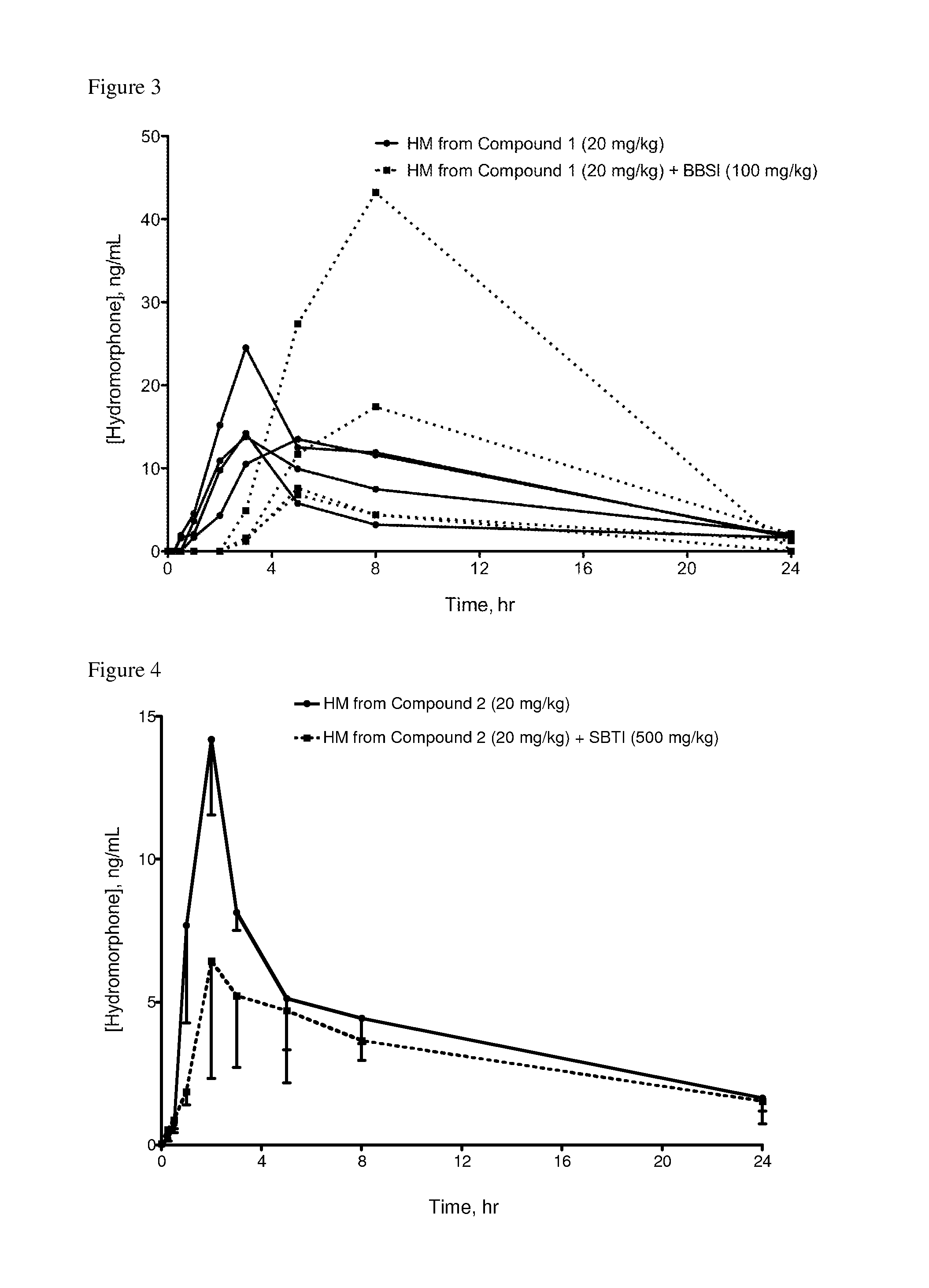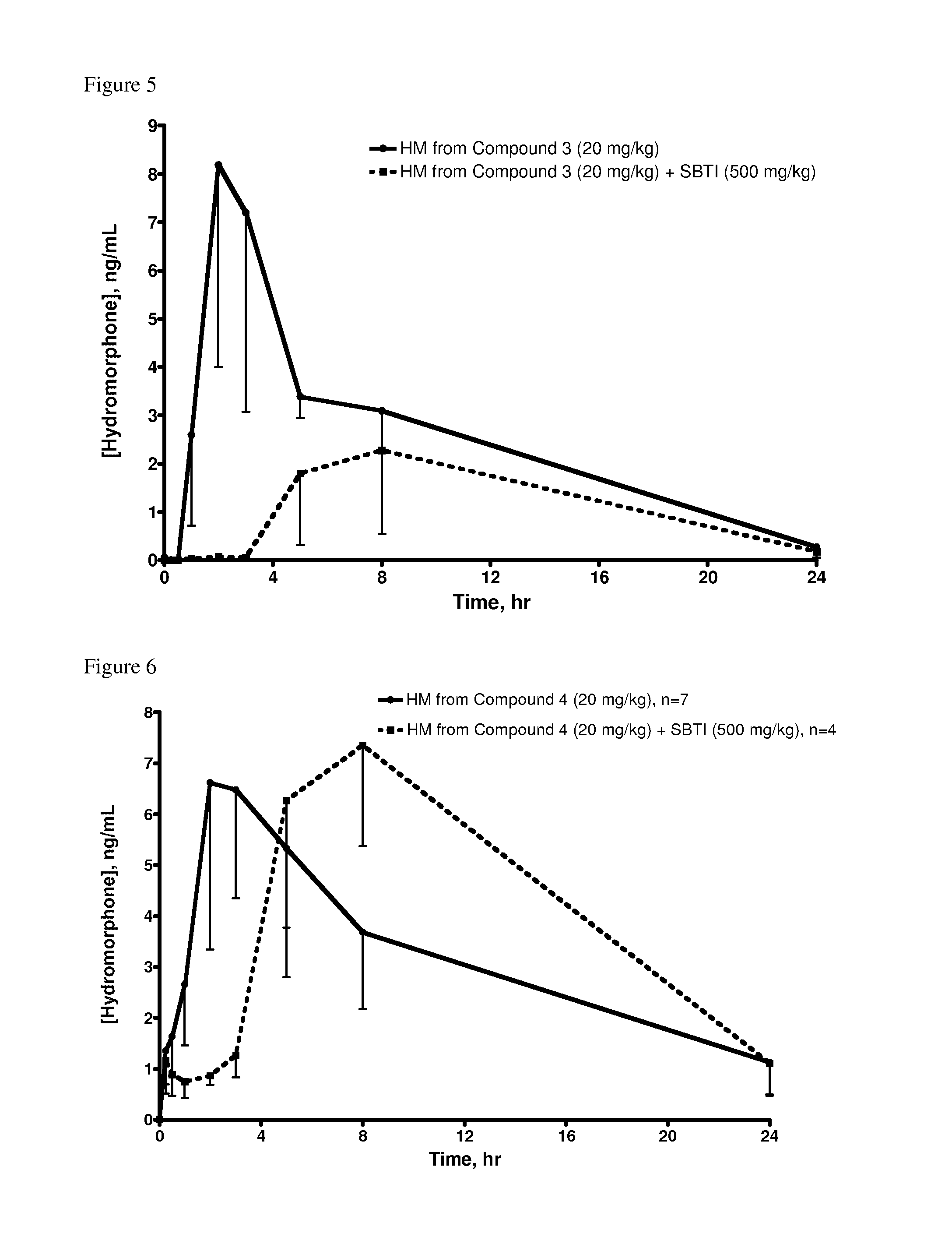Pharmaceutical compositions with attenuated release of phenolic opioids
a technology of attenuated release and pharmaceutical compositions, which is applied in the direction of drug compositions, applications, peptides, etc., can solve the problems of patients being denied treatment, phenolic opioids are susceptible to abuse, and the access to drugs is expensive to administer
- Summary
- Abstract
- Description
- Claims
- Application Information
AI Technical Summary
Benefits of technology
Problems solved by technology
Method used
Image
Examples
example 1
Oral Administration of Compound 1 and SBTI Trypsin Inhibitor to Rats
[0396]Hydromorphone 3-(N-methyl-N-(2-N′-acetylarginylamino)) ethylcarbamate (which can be produced as described in PCT International Publication No. WO 2007 / 140272, published 6 Dec. 2007, Example 3, hereinafter referred to as Compound 1) and SBTI to (trypsin inhibitor from Glycine max (soybean) (Catalog No. 93620, ˜10,000 units per mg, Sigma-Aldrich) were each dissolved in saline.
[0397]Saline solutions of Compound 1 and SBTI were dosed as indicated in Table 1 via oral gavage into jugular vein-cannulated male Sprague Dawley rats that had been fasted for 16-18 hours (hr) prior to oral dosing; 4 rats were dosed per group. When SBTI was dosed, it was administered 5 minutes (min) prior to Compound 1. At specified time points, blood samples were drawn, quenched into methanol, centrifuged at 14,000 rpm @ 4° C., and stored at −80° C. until analysis by high performance liquid chromatography / mass spectrometry (HPLC / MS).
[0398]...
example 2
Oral Administration of Compound 1 and SBTI Trypsin Inhibitor, in the Presence of Ovalbumin, to Rats
[0401]In an effort to understand the role of SBTI, ovalbumin was used as a non-trypsin inhibitor protein control. Albumin from chicken egg white (ovalbumin) (Catalog No. A7641, Grade VII, lyophilized powder, Sigma-Aldrich) was dissolved in saline.
[0402]Saline solutions of Compound 1 and SBTI (as described in Example 1) and of ovalbumin were combined and dosed as indicated in Table 2 via oral gavage into jugular vein-cannulated male Sprague Dawley rats (4 per group) that had been fasted for 16-18 hr prior to oral dosing. At specified time points, blood samples were drawn, harvested for plasma via centrifugation at 5,400 rpm at 4° C. for 5 min, and 100 microliters (μl) plasma transferred from each sample into a fresh tube containing 1 μl of formic acid. The tubes were vortexed for 5-10 seconds, immediately placed in dry ice and then stored until analysis by HPLC / MS.
[0403]Table 2 indicate...
example 3
Oral Administration of Compound 1 and BBSI Inhibitor to Rats
[0406]Compound 1 and BBSI (Bowman-Birk trypsin-chymotrypsin inhibitor from Glycine max (soybean), Catalog No. T9777, Sigma-Aldrich) were each dissolved in saline.
[0407]Saline solutions of Compound 1 and BBSI were dosed as indicated in Table 3. Dosing, sampling and analysis procedures were as described in Example 1.
[0408]Table 3 indicates the results for rats administered Compound 1 with or without BBSI. Results are reported as maximum blood concentration of hydromorphone (average±standard deviation) for each group of 4 rats (n=4) as well as for 3 of the 4 rats administered Compound 1 and BBSI (n=3).
[0409]
TABLE 3Maximum concentration (Cmax) of hydromorphone in rat bloodCompound 1BBSICmaxNumber of(mg / kg)(mg / kg)(ng / ml HM)Rats (n)20016.5 ± 5.3n = 42010010.6 ± 5.9n = 320100 18.7 ± 17.0n = 4Lower limit of quantitation was 1 ng / ml for both groups. Cmax of rat not included in n = 3 analysis was 43 ng / ml; range of other rats was 6.8...
PUM
| Property | Measurement | Unit |
|---|---|---|
| pH | aaaaa | aaaaa |
| temperature | aaaaa | aaaaa |
| volume | aaaaa | aaaaa |
Abstract
Description
Claims
Application Information
 Login to View More
Login to View More - R&D
- Intellectual Property
- Life Sciences
- Materials
- Tech Scout
- Unparalleled Data Quality
- Higher Quality Content
- 60% Fewer Hallucinations
Browse by: Latest US Patents, China's latest patents, Technical Efficacy Thesaurus, Application Domain, Technology Topic, Popular Technical Reports.
© 2025 PatSnap. All rights reserved.Legal|Privacy policy|Modern Slavery Act Transparency Statement|Sitemap|About US| Contact US: help@patsnap.com



